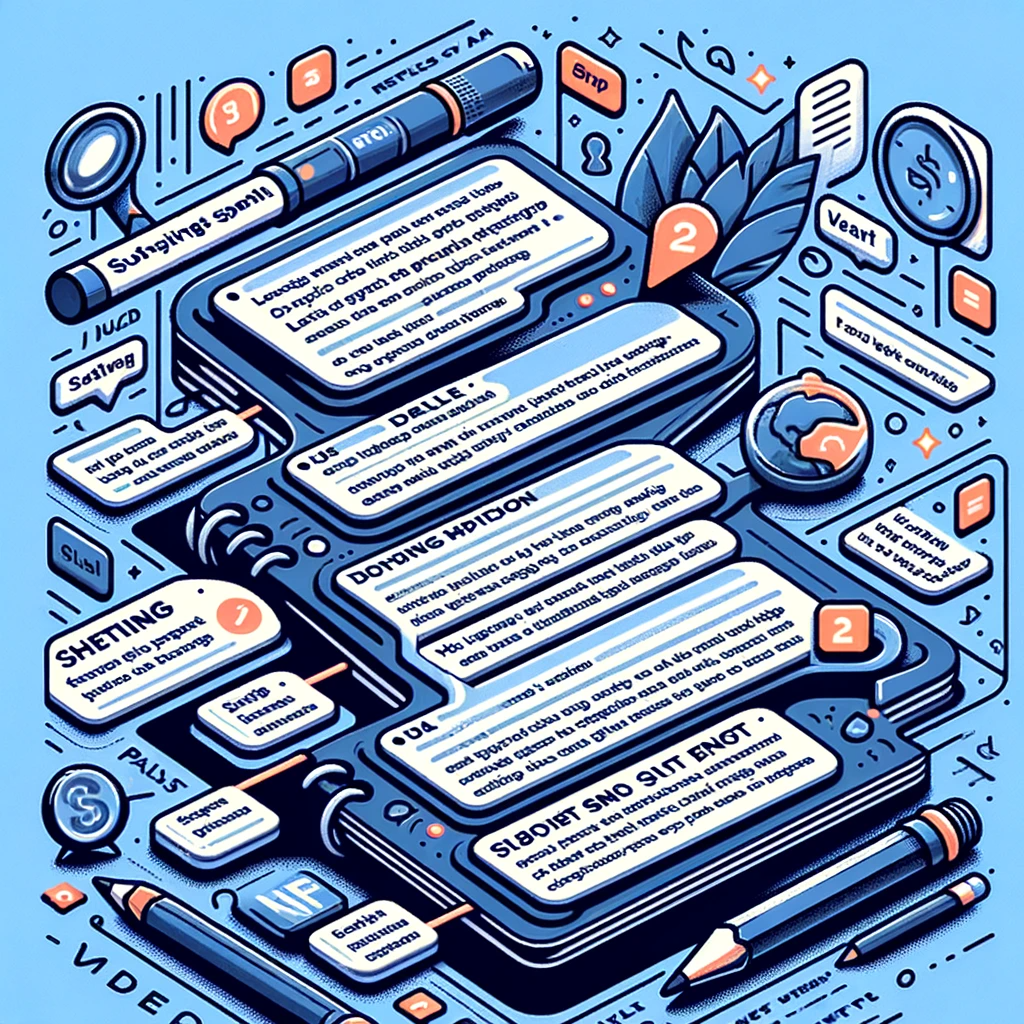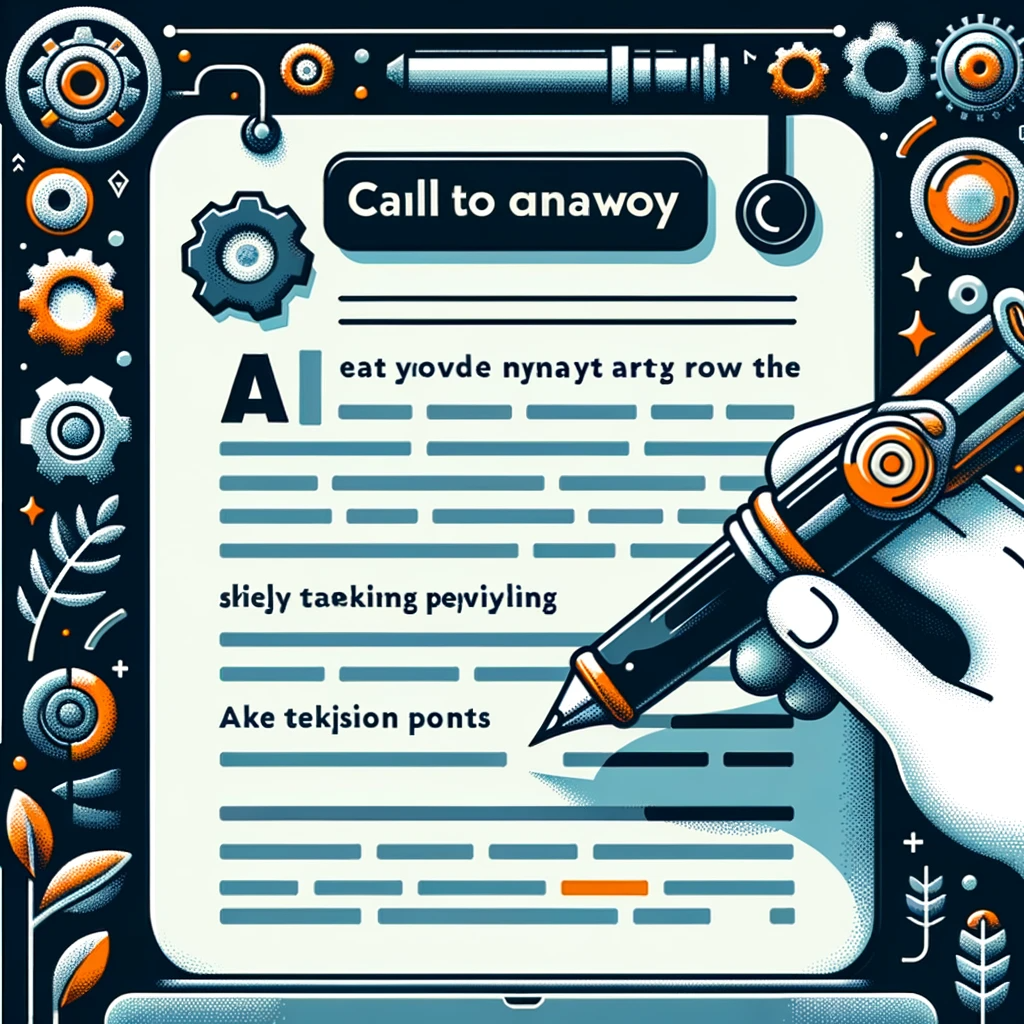Introduction
In the dynamic world of professional services, the art of blogging stands as a beacon of opportunity for marketers and business professionals. By harnessing the power of well-crafted blog posts, you can attract, educate, and engage a dedicated audience, turning readers into loyal clients. This comprehensive guide is your pathway to mastering the art of blog writing in 2023, with a special focus on the needs and nuances of marketing in the professional services sector.
The landscape of professional services marketing is evolving rapidly, with more firms recognizing the unparalleled value of blogging as a strategic tool. In an era where digital presence is crucial, a well-maintained blog serves as the cornerstone of your online identity, helping to establish your brand, showcase your expertise, and build trust with potential clients. It’s not just about sharing information; it’s about demonstrating thought leadership and providing solutions to the challenges faced by your audience.

Moreover, blogging in professional services isn’t merely a passive exercise; it’s an interactive platform that allows for two-way communication. Through comments, social media shares, and direct feedback, you can engage in meaningful conversations with your audience, deepening relationships and fostering a sense of community. This interactive aspect of blogging ensures that your content remains relevant, as you can continuously adapt to the changing needs and interests of your readers.
Let’s unveil the secrets to creating blog posts that not only capture attention but also educate and inspire action. Whether you’re a seasoned marketer or stepping into the realm of content creation for the first time, these insights will elevate your blogging strategy, ensuring your content resonates with your audience and drives your business goals. In the following sections, we’ll explore the essential components of a successful blog post, including crafting compelling headlines, creating engaging introductions, delivering impactful content, and concluding with a persuasive call to action.
Embrace the journey through this guide, as we delve into the art and science of blogging tailored for the professional services sector. By the end, you’ll be equipped with the knowledge and tools to create blog posts that not only inform and engage your audience but also reflect the unique value proposition of your professional services.
In conclusion, blogging is an invaluable tool in the arsenal of professional services marketing. It allows for the demonstration of expertise, fosters relationships, and enhances your digital footprint. As we progress through this guide, keep in mind the power of well-crafted content in shaping perceptions and influencing decisions. Stay tuned for an in-depth exploration of each element that makes a blog post successful, from the initial headline to the final call to action.
Section 1: Understanding Your Audience
The foundation of any successful blog lies in a deep understanding of its readers. In the context of professional services, your audience likely comprises industry peers, potential clients, and other stakeholders seeking insightful, authoritative content. Delving into their needs, challenges, and interests is crucial. Start by developing reader personas – semi-fictional representations of your ideal readers – based on real data and educated guesses about demographics, behavior patterns, goals, and motivations.
Understanding your audience in the professional services sector means recognizing the diversity within this group. Industry peers might seek advanced insights or updates on industry trends, while potential clients might look for practical advice and assurance of your expertise. Tailoring your content to address these varied needs is paramount. For instance, a blog post intended for peers might delve into in-depth analysis of a recent regulatory change, whereas content for potential clients might focus on how your services can help navigate these changes.
Creating reader personas involves thorough research and sometimes, direct interaction with your audience. Surveys, interviews, and feedback from existing clients can provide valuable insights into what your audience is looking for in your content. Online tools and platforms can also offer data-driven insights into audience preferences and behaviors. Websites like Buzzsumo or Google Analytics can help identify popular topics and content trends within your industry.
Crafting content that speaks directly to these personas not only enhances engagement but also establishes your blog as a go-to resource in your field. Remember, in professional services, your readers are looking for more than just information; they seek guidance, solutions, and thought leadership that can help them navigate their professional challenges. For example, a blog post addressing common challenges in tax planning can establish your expertise and reliability in the eyes of a potential client seeking tax services.
Moreover, by understanding your audience, you can also align your content with their preferred formats and channels. Some audiences might prefer detailed whitepapers or reports, while others might engage more with infographics or short videos. Knowing where your audience spends their time online – be it LinkedIn, industry forums, or specific social media platforms – allows you to distribute your content more effectively, increasing its reach and impact.

In conclusion, the key to successful blogging in professional services is a nuanced understanding of your audience. By creating and catering to detailed reader personas, you can ensure that your content not only reaches the right audience but also resonates with them, establishing your blog as a valuable resource in your industry.
Tailoring your content to specific reader personas, backed by research and direct interaction, ensures that your blog effectively meets the unique needs of your audience. By understanding and addressing these needs, you create a platform that not only informs but also builds trust and authority in your professional field.
Section 2: Crafting Clickable Headlines
The headline of your blog post is your first and possibly only chance to grab the reader’s attention. In the professional services arena, where the competition for attention is fierce, your headline must be compelling, clear, and reflective of the content’s value. Focus on addressing specific pain points or offering clear solutions. For instance, “5 Innovative Tax Planning Strategies for Small Business Owners” directly targets a specific audience with a clear promise.
Headlines act as the gateway to your content; hence, they must be crafted with precision and creativity. In the world of professional services, where topics can often seem complex or niche, an effective headline simplifies and intrigues. It’s about striking a balance between being informative and sparking curiosity. For example, a headline like “The Secret to Maximizing ROI in IT Investments” is both informative and curiosity-inducing, promising exclusive knowledge.
Utilize formats proven to drive engagement, such as “How-to” guides, listicles, or question-based headlines. These formats have stood the test of time and continue to perform well across various industries, including professional services. Injecting vivid language adds an emotional pull, while keeping it short and scannable ensures it’s easily digestible in a fast-paced digital landscape.
Moreover, leveraging the power of numbers in your headlines can be particularly effective. Numbers break the monotony of text and offer a clear expectation of what the article will deliver. For example, “7 Proven Strategies to Enhance Your Law Firm’s Digital Presence” is more likely to attract clicks due to its specificity and promise of multiple solutions.
Remember, headlines also play a crucial role in search engine optimization (SEO). Including relevant keywords can enhance your post’s visibility on search engines, leading to increased traffic. Tools like CoSchedule’s Headline Analyzer can help you refine your headlines for both SEO and reader engagement.
Finally, testing different headlines can provide insights into what resonates best with your audience. A/B testing headlines on social media or using email subject lines can be a practical approach to understanding what works best for your specific audience. This data-driven approach to headline creation ensures your content reaches and engages the right audience.
In conclusion, crafting clickable headlines is an art that combines creativity, clarity, and a deep understanding of your audience’s needs and preferences. By following these guidelines, you can create headlines that not only capture attention but also accurately represent the valuable content you offer.
Effective headlines are the make-or-break element in blog engagement. A well-crafted headline promises value and piques interest, leading to increased readership and engagement with your professional services blog.

Section 3: Creating a Captivating Introduction
Once your headline has done its job, the introduction needs to pull readers deeper into the post. Start with an empathetic approach, showing that you understand the reader’s challenges or aspirations. Craft your intro to evoke emotions like curiosity or excitement, using short, crisp sentences to keep the momentum going.
A compelling introduction is the hook that keeps the reader engaged. In the professional services context, where topics can be intricate and specialized, your introduction should simplify the complexity and promise valuable insights. For example, an introduction stating, “In a world where financial regulations are constantly evolving, staying ahead can be challenging. Here’s how we simplify it for you,” directly addresses a common pain point and offers a solution.
For example, starting with a relatable scenario or a provocative question can be effective. “Ever wondered how some firms effortlessly navigate the complexities of digital marketing?” immediately piques interest. This kind of opening not only draws the reader in but also sets the stage for the informative content that follows. It’s about striking a balance between being intriguing and giving a sneak peek of the value the reader will gain from the post.
Hint at the solutions or insights that lie ahead, but save the details for the main body to keep readers hooked. The introduction should be a teaser of the comprehensive insights that you’re about to unfold. This method of ‘teasing’ the reader is effective in maintaining their interest throughout the article. It’s like starting a journey where the reader is compelled to stay on the path to discover the destination.

In addition to the content, the formatting of the introduction is crucial. Utilize bold text or italics to emphasize key phrases or questions that you want the reader to notice immediately. Websites like Copyblogger offer great insights on creating engaging content that can serve as inspiration for writing effective introductions.
In conclusion, the introduction of your blog post plays a pivotal role in determining whether readers will stay engaged. By crafting an introduction that resonates with your audience’s needs and sparks their interest, you set the stage for a compelling and informative read.
Remember, the introduction is your opportunity to make a strong first impression. Use it wisely to engage your audience from the outset, promising them a journey through your post that is both enlightening and enriching.
Section 4: Delivering Valuable Content
The core of your blog post is where you deliver on the promises made in your headline and introduction. In professional services marketing, this means providing in-depth, actionable advice backed by expertise and experience. It’s about going beyond surface-level information and offering real, tangible solutions and insights that your audience can apply in their professional lives.
To achieve this, break up your text with relevant subheadings to guide the reader through your content. This not only enhances readability but also allows busy professionals to quickly scan and grasp key points. For example, a section titled “Innovative Financial Planning Strategies” immediately informs the reader of the content’s focus, setting clear expectations.
Share unique perspectives or little-known industry insights to set your content apart. What makes your approach, your solutions, or your insights different? This could involve sharing case studies, exploring new trends, or offering a contrarian view on a well-established topic. A blog post that brings fresh perspectives to the table is more likely to be remembered and shared.

Organize your advice or information in a clear, logical manner – consider using numbered lists or step-by-step guides for complex topics. This approach not only simplifies the content but also makes it more actionable. For instance, a step-by-step guide on implementing a new accounting software will be more helpful to your audience than a general discussion on software options.
Start and end each section with powerful statements to reinforce your key messages and keep readers engaged. The opening sentence of each section should intrigue the reader, while the concluding sentence should encapsulate the main idea, leaving the reader with a clear takeaway. For example, start a section on market analysis with a compelling question or statement that highlights its importance, and end with a summary of key market trends.
For further insights on creating valuable content, resources like HubSpot’s Blog provide excellent examples and best practices in content creation and marketing.
In conclusion, the heart of a successful professional services blog post lies in its ability to provide valuable, actionable content. By structuring your post with clear subheadings, sharing unique insights, and presenting information in an organized manner, you can create content that not only informs but also empowers your readers.
Remember, valuable content is the cornerstone of effective blogging in professional services. It’s what sets your blog apart and establishes you as an authority in your field. By delivering content that meets and exceeds your audience’s expectations, you create a blog that they will turn to time and again for insights and guidance.
Section 5: Engaging Visuals and Media
Visual elements are crucial in enhancing reader engagement and breaking up text-heavy content. In the realm of professional services, where concepts can be complex and data-driven, visuals such as charts, graphs, and infographics play a pivotal role in simplifying and effectively communicating information. They transform abstract ideas into tangible visuals, making it easier for readers to understand and retain information.
For a professional audience, visuals should be informative and relevant. Consider using bar graphs to depict financial trends, pie charts to show market share distributions, or flowcharts to explain process methodologies. Infographics are particularly effective in summarizing lengthy or complicated information into digestible, visually appealing formats. Tools like Canva or Venngage offer easy-to-use templates for creating professional infographics and visuals. Our Blog Wizard has AI image creation integrated.
Videos, where appropriate, can add a dynamic element to your content. They are excellent for demonstrating concepts, explaining complex services, or showcasing client testimonials. A well-produced video can convey a message more effectively than text and can be a powerful tool for building trust and credibility. Platforms like Vimeo or Wistia provide professional video hosting options with added analytics to track engagement.
When selecting or creating images, ensure they align with your post’s topic and tone. High-quality, relevant visuals not only make your post more appealing but also reinforce your message and aid in reader retention. For instance, using a diagram to illustrate a legal process or a step-by-step guide for a business strategy can significantly enhance understanding and engagement.
Additionally, incorporating visuals improves your blog’s SEO. Images and videos can be optimized with alt text and file names that reflect your targeted keywords, thereby increasing the likelihood of your content appearing in search results. Websites like Moz provide guidelines on how to optimize images for SEO effectively.
In conclusion, integrating engaging visuals and media into your blog posts is not just about aesthetics; it’s about enhancing the effectiveness of your content. By carefully selecting and creating visuals that complement and clarify your written content, you can create a more immersive and impactful reading experience for your professional audience.

Remember, in the world of professional services, where the content can often be dense and complex, visuals serve as a bridge between your expertise and your audience’s understanding. By harnessing the power of visuals, you can transform your blog into a more engaging, informative, and memorable resource for your readers.
Section 6: Concluding with Impact
The conclusion of your blog post is more than just a summary; it’s your final opportunity to leave a lasting impression and motivate readers to take action. This is where you reinforce the key takeaways of your post and illustrate how they can be applied in the reader’s professional life. A powerful conclusion does more than just restate content; it provides a clear and compelling reason for the reader to believe in and act upon your advice.
In professional services marketing, where the decision to engage can be significant, your conclusion should emphasize the tangible benefits of acting on your guidance. For instance, if your post discusses innovative marketing strategies, your conclusion could highlight the potential for increased client engagement and business growth as a result of implementing these strategies.
Encourage readers to engage further, whether through commenting, sharing the post, or exploring your services. This final call to action (CTA) is crucial and should be crafted carefully. It should be clear, compelling, and directly related to the content the reader has just consumed. For example, if your post is about financial planning, your CTA could invite readers to download a free financial planning toolkit or schedule a consultation to discuss their specific needs.
Your conclusion can also direct readers to related content on your blog or website, keeping them engaged with your brand. Websites like Neil Patel’s blog effectively use this strategy, guiding readers to additional resources and deepening their engagement with the site.
In conclusion, the closing section of your blog post should resonate with your audience, compelling them to consider how your insights can be beneficial in their professional endeavors. By articulating the value of your advice and inviting further interaction, you transform your blog from a mere information source into a powerful tool for engagement and conversion.

Remember, a well-crafted conclusion is the final piece that cements your blog post’s value in the reader’s mind. It’s your chance to inspire action, foster deeper engagement, and leave your audience with a memorable impression of your expertise and insight.
Section 7: Polishing and Perfecting Your Post
The final touches to your blog post can significantly elevate its quality and impact. This phase is about refining your content to ensure it is clear, coherent, and concise. Review each paragraph, sentence, and word. Are they adding value to your post? Are they clear and easy to understand? Tools like Grammarly or Hemingway Editor are invaluable in this process, helping to identify and correct grammatical errors and improve readability.
Pay special attention to formatting – use bullet points, bold text, and italics to emphasize key points. This not only makes your post more reader-friendly but also helps highlight the most important information. For example, using bold text for key takeaways or action items makes them stand out, ensuring that readers don’t miss them.
Additionally, consider SEO factors. Use relevant keywords naturally throughout your post, optimize your meta description, and ensure your post is mobile-friendly. These steps are crucial for improving your post’s visibility on search engines, thereby reaching a wider audience. Tools like Yoast SEO can guide you in optimizing your content for search engines effectively.

Moreover, the visual appeal of your post plays a significant role in retaining reader interest. Use high-quality images, charts, or infographics to break up large blocks of text and add a visual dimension to your content. Ensuring your post is aesthetically pleasing and easy to navigate enhances the overall reader experience.
In conclusion, the process of polishing and perfecting your blog post is as important as writing the initial draft. It’s about fine-tuning your content to make it as clear, engaging, and impactful as possible. By paying attention to grammar, formatting, SEO, and visual appeal, you can transform a good post into a great one.
Remember, a well-polished blog post reflects your professionalism and attention to detail, qualities highly valued in the professional services sector. By dedicating time to this final phase of content creation, you ensure that your post not only captures but also retains your audience’s attention, making it a valuable asset to your content marketing strategy.
Conclusion: Empowering Your Professional Blogging Journey
As we wrap up this comprehensive guide, remember that effective blogging in the professional services sector is a blend of art and science. It requires a deep understanding of your audience, skillful crafting of content, and strategic use of visuals. These elements, when combined, create a powerful tool for communicating your message, engaging your audience, and reinforcing your brand and authority in your field.
Effective blogging goes beyond just writing; it involves connecting with your audience on a deeper level. It’s about creating content that resonates, that speaks directly to the needs and interests of your readers. By consistently providing valuable insights and solutions, you can establish a strong, loyal readership. This loyalty is the foundation upon which long-term professional relationships are built.
Moreover, in the realm of professional services, blogging is an invaluable tool for demonstrating thought leadership. By sharing your expertise and perspectives, you position yourself as an authority in your industry. This thought leadership is integral to building trust and credibility with your audience, which are crucial elements in the decision-making process of potential clients.

Embrace the power of blogging as a key tool in your marketing arsenal. With dedication and practice, you’ll develop a strong, loyal readership and establish yourself as a thought leader in your industry. The journey to becoming an effective blogger is ongoing and evolves with your audience and the changing dynamics of the industry. Continuously honing your skills, staying abreast of trends, and adapting to new technologies and platforms will keep your blog relevant and engaging.
In conclusion, your blogging journey is a significant aspect of your professional growth and brand development. By following the guidelines outlined in this guide and committing to producing quality content, you can create a blog that not only informs and engages your audience but also plays a pivotal role in your marketing strategy and business growth.
As you move forward in your blogging journey, keep in mind the power of well-crafted content in shaping perceptions, influencing decisions, and establishing lasting connections with your audience. Your blog is more than just a collection of posts; it’s a reflection of your expertise, your brand, and your commitment to your profession.








